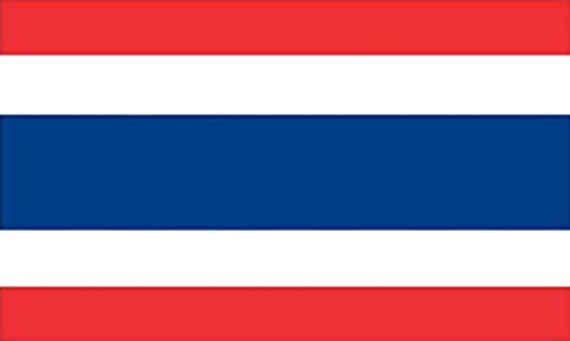Our lead author and book designer at Children Bilingual Books is Denise Bourgeois, originally from a small township 40 minutes west of Montreal. She was raised bilingual, attending French schools before transferring to an English bilingual high school. Her childhood was tough, but she said she never knew any better. She lived with her six siblings in a two-bedroom apartment in the poor part of the town. Her mother died when Denise was 14, and her father was committed to a nursing home the year prior. Parentless, her 22-year-old brother managed to keep the family together at the same home until each of her siblings were ready to meet life on their own.
At 17, Denise married an older man and had 3 children until they divorced in 2000, a year before she moved her three children west to Alberta. She worked as an assistant manager at a local 7-Eleven to support her children as she began her long journey of higher education. Six years later she moved to the U.S. on a student visa to attend collage near Seattle where she met, fell in love, and married her future husband. In 2010, she became a U.S. citizen and graduated with a bachelor’s degree from Washington State University. After teaching early learners for a number of years, Denise became a Family Support Specialist for a local district in King County, Washington and worked with underprivileged families with young children. Many of them were bilingual immigrants and refugees. Her years of professional and private experience taught her that the only thing keeping us from succeeding in life on any level, is our positive outlook and persistence. Denise Bourgeois still possesses both.
Renowned Author Jodi Picoult once said “You can always edit a bad page. You can’t edit a blank page.” Good advice from an author of 28 books translated into 34 languages. Our own author, Denise Bourgeois reiterates this same sediment. “Sometimes, you just have to sit down and start writing.”
Denise never fancied herself a writer. Teachers at her school told her that her word order was often backwards, based on being educated as a French bilingual. The same is said of many of the bilingual students in our schools today.
However, studies today show that children learning to read in two languages simultaneously do well when they have the needed tools and direction. The study concluded that “Being bilingual did not slow down or confuse children when it came to reading – in fact, bilingual kids were good readers and even showed some advantages over their monolingual peers.” The same was true with Denise as she completed her education.
Fast forward to early 2019. Denise found that many of the families she worked with in the district had two things in common. First, English was not their first language. Second, many experienced the same socio-economic circumstances she had encountered much of her life. She started asking immigrant families how their children learned to read in their first language. “I translate the book’s English as I read so they can understand it,” said one Vietnamese American parent. Grandparents or first-gen parents who are not proficient in English have no means of reading books to their children. American schools are not going to teach your children to read in Vietnamese, Urdu or Ukrainian.
Denise knew that if these bilingual children were going to succeed in school, they needed tools that would bring them to an understanding of both languages. During early development, a child’s brain is trained to learn language, whether it be one, two or three. Later in life, we use another part of the brain to pick up a second language which is much harder for us at that stage of life.
“Dual-text, that’s what they need,” thought Denise. The concept is nothing new, but why then isn’t there more books with parallel text? The answer is simple. Traditional publishers don’t find it profitable. Sure, there are some Spanish books and a few Chinese maybe, but writing dual-text books in all the languages spoken in the U.S. is impossible, or is it? Half of Italian libraries carry non-Italian books. OK, so one in five U.S. household speak a second language, yet only three percent of our literature is translated. Can that really be true in 2022 in America, the melting pot of the world? It is true, and it’s a shameful truth. It’s a shame affixed to every traditional publisher across the country, and as a nation, we need to do better.
Indie writers produce some children books in other languages, but rarely in dual text. In addition, most of these works could not supplement early learning curricula in a meaningful way. Books on talking dogs and fairy princesses have their place, but teachers and parents want characters and storylines their child can relate with and then emulate.
“I wanted to find a series of early learning books that mirror the events that are occurring in the lives of these children here and now,” says Bourgeois. “And” she continued, “I want books in their family’s language.”
Fast forward again to late 2019 and the see the early stages of what would become her company, Children Bilingual Books; a developer, publisher, and distributor of an 11-book series of early learning books translated into 22 languages.
Bourgeois claims that the key to writing children’s books is first to recognize your love of children. “And it’s that one thing in life that we love the most is wherewith we put the majority of our attention. I hope that the love I have for children has been carried over to my books.” Bourgeois said she wanted to write books that would provide social skills needed for bilinguals to succeed in our school systems, in particular, early learners going into kindergarten. She made it her goal to have the books written, illustrated, and published within a year. “My first question was why there were not more dual-language books,” says Bourgeois. “My second and bigger question was directed to myself. Could I write these books and make them meaningful to bilinguals?” With this, she drew on Jodi Picoult’s suggestion to just get started writing, and writing she did.
She quickly outlined (10) 32-page illustrated books which would eventually make up the Sophia and Alex series. (An 11th book was soon added later as a supplement during COVID.) Illustrators were interviewed and Artist Damon Danielson was selected to design the 11-book series. Every Monday morning at 6:30 am for nearly a year, Bourgeois and Danielson telecommunicated throughout the development of the series.
The writing process was simple. Bourgeois would outline the book using PowerPoint, one slide for every page. On the slide, she would add the text along with a brief description of how she envisioned the art. She would review this with Danielson who would then dummy out the art for review the following week. Once the initial art was approved, he would then add detail and color. The goal was for the illustration to match the text and tell the story through the art. The book would go through two more reviews or until all parties were satisfied with the results. In some cases, the art was re-drawn, or the script re-worked. The story was shopped around for any last-minute changes.
Dual-text books require an added step. As a bilingual herself, Bourgeois knows that the translation not only needs to be accurate but requires the same word flow as the English version. Word-for-word translations from a machine translation does not convey the same feeling that a native speaker can provide. Finding a proficient, honest translator can make or break a bilingual book.
Once the book is complete, the JPEG file of the illustrations are uploaded to a publishing app. The English and non-English scripts are mixed with the illustrations so that all pages align to the suggested format. The completed format is then downloaded to a PDF file. The cover is created and saved as a JPEG. The book files are ready for publishing.
If this sounds easy, it was not. The first prototypes of the series are released in late February, the same week, schools, and libraries across the country start to shut their doors due to the rapid spread of COVID-19. The upside of COVID was that the team was able to concentrate 100 percent on development over marketing. Languages were expanded and the team started their publishing introduction to national and state library and educational conferences. The reception to the books was phenomenal. “This is exactly what is needed in our schools,” commented one conference goer from Virginia. “Can you do more?”
To date, Children Bilingual Books has 400 publications stretching over 22 languages in formats ranging in hardback, softcover, eBook, audio-print, and audio-eBook. Studies show that “Being bilingual did not slow down or confuse children when it came to reading – in fact, bilingual kids were good readers and even showed some advantages over their monolingual peers.”
So now, the next question is for libraries and schools. Will your Dari, Arabic, Vietnamese, and Ukrainian bookshelves continue to collect dust in 2023?


























